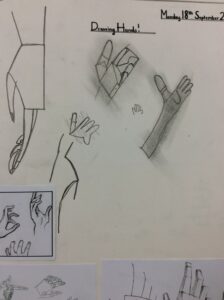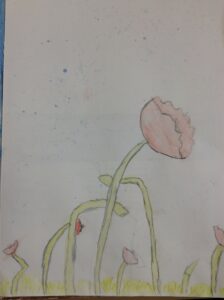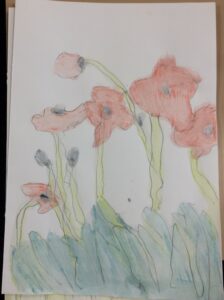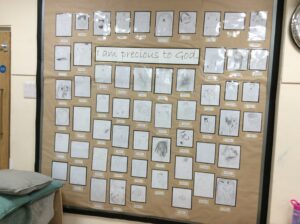ART
But now, O Lord, you are our Father; we are the clay, and you are our potter; we are all the work of your hand.
Isaiah 64:8
Art and design stimulates creativity and imagination. It provides visual, tactile and sensory experiences and a special way of understanding and responding to the world. It enables children to communicate what they see, feel and think through the use of colour, texture, form, pattern and different materials and processes.
Children become involved in shaping their environments through art activities. They learn to make informed judgements and aesthetic and practical decisions. They explore ideas and meanings through the work of artists. Through learning about the roles and functions of art, they can explore the impact it has had on contemporary life and that of different times and cultures. The appreciation and enjoyment of the visual arts enriches all our lives.
The thread of Catholic Social Teaching runs throughout the teaching and learning of Art at BRW. When painting portraits of ourselves or others and when we remember Human Dignity – We are beautifully made in the image and likeness of God. Respect each individual because we are all special. When sharing resources, we remember that we work for the Common Good – We are called to work for the good of each and all. When we make choices and act, think of everyone. When planning and resourcing art sessions, teachers remember to consider Participation – We all have the right and duty to participate fully in society. We take part together, live together and include everyone. When evaluating work or planning how and where it should take place, we consider Subsidiarity – We are called to empower each other and let everyone have a say. Let those who are affected make decisions and have a voice! Creating art work, using natural resources or based on the natural world, we discuss our responsibility for Stewardship – We are guardians of God’s creation: the world and each other. We care for and use God’s gifts responsibly. When taking part in collaborative projects, we have the opportunity to teach about Solidarity – We recognise each other as our brothers and sisters. We show we care by working for their good.
Planning reflects a commitment to taking learning outside and provides high quality outdoor learning opportunities.
At BRW our intent is to:
- Develop knowledge of the key concepts in drawing, colour and sculpture.
- Develop the ability to evaluate own art and that of others
- Foster an enjoyment and appreciation of the visual arts and a knowledge of a variety of artists – contemporary, from different periods of history and different cultures.
- Enable children to record from first-hand experience and from imagination, and to select their own ideas to use in their work
- Develop creativity and imagination through a range of activities
- Develop knowledge of art progressively, building on the previous year’s learning and consolidating knowledge so that it is a foundation for the next year’s learning
- Improve the children’s ability to control materials, tools and use a variety of techniques
- Increase critical awareness of the roles and purposes of art in different times and cultures
- Develop increasing confidence in the use of visual and tactile elements and materials
- Provide every child with the opportunity to be inspired by the arts and achieve success through the arts
- Enable children to work independently and collaboratively, on a small scale and a large scale, inside and outside
- Develop opportunities for children to share arts experiences, to act as mentors and leaders for less experienced children and to present artworks to others.
- Strengthen partnerships and build new partnerships which make the arts sustainable and bring benefit to children and the wider community
- Enable children to use their developing artistic knowledge and skills to respond to learning across the whole Early Years or National Curriculum.


































